Mystical tourism in Cusco is more than just a visit to a tourist destination; it is a profound experience connecting you to ancient civilizations’ rich spiritual and cultural heritage, especially the Incas. This type of tourism invites you to explore sacred places, participate in traditional rituals, and immerse yourself in spiritual practices that have endured through the centuries.
Why is Cusco the Ideal Destination?
Cusco, known as the “navel of the world” in Inca culture, offers an impressive and vibrant setting that makes it the perfect place for mystical tourism. Majestic landscapes surround the city, with a rich history that resonates in every corner. From its ancient ruins to its living traditions, Cusco offers you the opportunity to experience spirituality in its most authentic form.
Myths and Realities
When discussing mystical tourism, it’s important to debunk some common misconceptions that may create confusion:
- Myth: Mystical tourism is only for religious people.
- Reality: While many seek spiritual experiences, mystical tourism is open to everyone. You don’t need to be religious to enjoy a personal journey of connection and well-being.
- Myth: Ceremonies are dangerous or not authentic.
- Reality: Ceremonies in Cusco are guided by shamans and experts who respect ancestral traditions. Choosing responsible tour operators ensures an authentic and safe experience.
- Myth: Mystical tourism is expensive and exclusive.
- Reality: There are options for all budgets. From wellness retreats to day trips, you can find affordable activities that allow you to enjoy the spirituality of Cusco without emptying your wallet.
Mystical tourism in Cusco is a unique opportunity to explore the region’s rich cultural heritage while embarking on personal growth and healing. With breathtaking landscapes, ancient practices, and a focus on well-being, Cusco stands out as an ideal destination for those seeking a transformative experience.
So, if you’re ready to discover the mystical side of Cusco, prepare for an adventure that will change your life! You won’t just visit a place; you’ll connect with a millennia-old history and yourself.
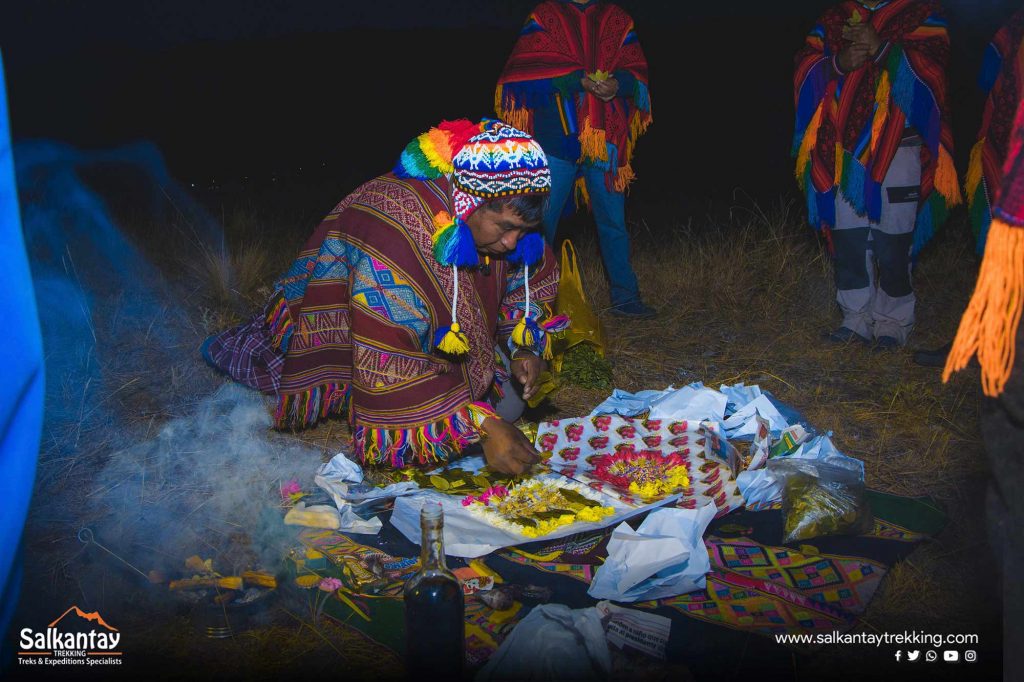
Mystical Experiences in Cusco
Cusco, the heart of the ancient Inca empire, is where spirituality and nature intertwine in unique ways. If you’re looking for an experience that transcends the ordinary, mystical experiences in Cusco, offer you a transformative journey filled with ancestral rituals, spiritual retreats, and a connection with the cosmos. Here’s everything you can explore in this magical city.
Ancestral Ceremonies
One of the most authentic experiences that Cusco offers is the ancestral ceremonies. These practices are a tribute to Pachamama (Mother Earth) and Inti (the Sun God), pillars of the Andean worldview. In these rituals, shamans or healers perform the “payment to the earth,” an act of gratitude where coca leaves, flowers, and other natural elements are offered as a token of appreciation for the abundance the Earth provides.
It’s a profound experience that fosters a closer connection with nature and acknowledges the land we inhabit.
- The Payment to the Earth
The “payment to the earth” ceremony is held in sacred sites such as mountains, rivers, lakes, or important Inca remains. In this act, homage is paid to Pachamama with offerings like coca leaves, seeds, grains, and sometimes even llama or sheep fetuses. A fermented drink, such as chicha, is also offered, although wine is becoming more common. This ritual is performed with special devotion on the first of August, which is considered the best time to express gratitude and ask for new blessings from the Earth. - The Ayahuasca Ritual
The Ayahuasca ceremony is a healing ritual that many consider essential for self-knowledge. While it is a transformative experience for those seeking profound change, it may seem risky for some. Those who wish to participate often travel specifically to Peru for this experience. In ancient times, these ceremonies helped expand levels of consciousness. To participate, preparing in advance and having a shaman or spiritual guide present is crucial to ensure safety and proper support during the process. Ayahuasca, a plant native to the Peruvian Amazon, is still used in various ceremonies in those regions.
You can read more on our blog: Ayahuasca, The Vine of Spirits. - The San Pedro or Wachuma Drink
The San Pedro ceremony, or Wachuma, is similar to the Ayahuasca ritual but involves a different drink. This healing ritual uses the Wachuma plant, known as the “spiny cactus.” Like Ayahuasca, this plant was used by ancient civilizations and is considered sacred for its effects, which include the ability to visualize the future and reach a deep state of meditation. Those interested in participating must prepare physically and mentally before the ceremony to ensure a safe and practical experience. - The Apaches
Though not rituals per se, Apachetas serve a similar function, acting as symbols of faith and devotion. These small stone towers, often found along paths or in sacred sites, are built by people as a sign of respect and reverence. These towers are believed to protect travelers and those in transit, acting as a prayer for their well-being during their journey.
Healing Rituals
Healing rituals are another facet of mystical tourism in Cusco. With the guidance of a shaman or healer, you can participate in energy-cleansing and spiritual healing ceremonies. These rituals often include using sacred herbs, chanting, and ancestral practices that balance the body, mind, and spirit.
Yoga and Meditation
If you’re looking for a space for introspection and well-being, spiritual retreats in Cusco are the ideal option. Many of these retreats combine yoga and meditation sessions in stunning natural settings. Imagine practicing yoga at dawn with views of the Andes; it’s an experience that revitalizes the soul. These retreats are designed to help you disconnect from the daily stresses and reconnect with yourself.
Astrology and Constellations
Astrology also plays a role in Cusco’s mystical experiences. Many spiritual guides offer astrological interpretation sessions, where you can learn how constellations influence your life and decisions. Being in such a historically and energetically charged place, these sessions can provide a new perspective on your path and connection with the universe.
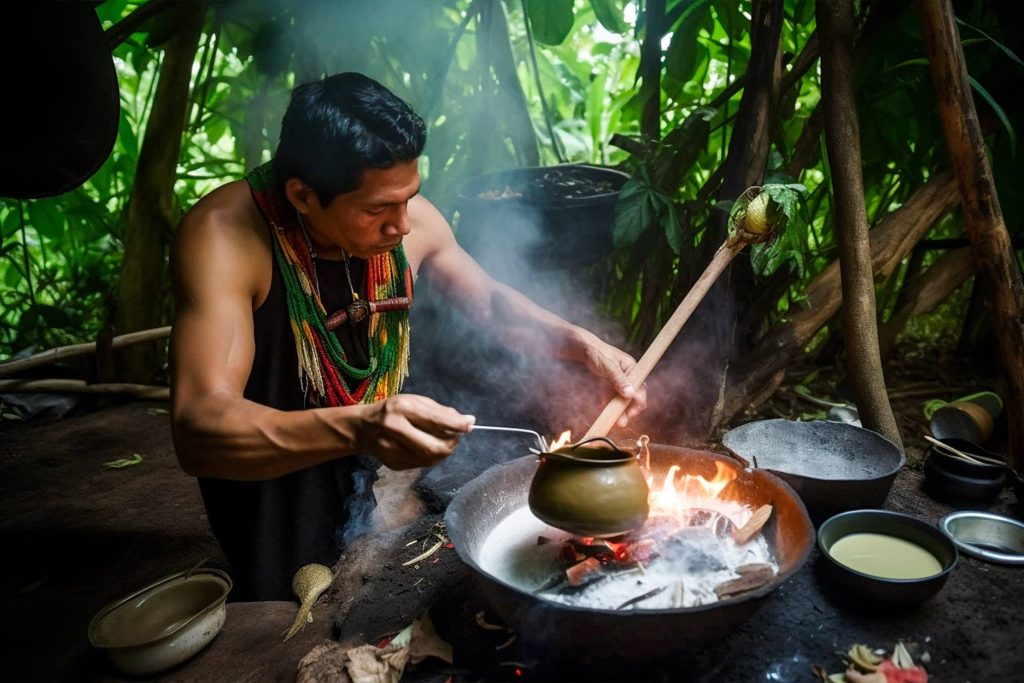
What Are the Benefits of Mystical Tourism?
Mystical tourism is more than an adventure in sacred places; it is an opportunity to deeply transform and enrich your life. By immersing yourself in ancestral rituals and connecting with nature, this tourism offers benefits that positively impact your physical, mental, and spiritual well-being. Below, we present how these experiences can help you grow and renew your perspective on life.
- Spiritual Growth
Participating in ancestral ceremonies, such as offerings to the earth or experiences with sacred plants like Ayahuasca, can open you to new spiritual dimensions. These rituals allow you to connect with the divine energies of nature, but they also facilitate deep introspection that can help you discover a more profound sense of purpose in your life. Many travelers who have participated in these ceremonies report a renewed sense of connection with the universe, a clearer understanding of their inner selves, and greater openness to new spiritual beliefs. According to recent studies, spiritual connection can increase happiness and personal satisfaction, leading to a higher sense of well-being. - Connection with Nature
One of the most potent aspects of mystical tourism is the opportunity to immerse yourself in some of the most breathtaking landscapes on the planet. Many of these practices occur in awe-inspiring natural settings, such as the sacred Andes mountains, valleys, or the Amazon rainforest. Direct contact with nature fosters a deeper connection with the environment, which can improve emotional and physical well-being. Research in ecotherapy shows that being in nature can reduce stress, improve concentration, and increase happiness levels, making mystical tourism a spiritual experience and a natural therapy for the soul and body. - Physical and Mental Well-being
Mystical tourism is also intrinsically linked to practices that promote overall well-being, such as meditation, yoga, and other ancestral healing rituals. Meditation, central to many ceremonies, has been extensively studied for its benefits in reducing stress, improving mental clarity, and promoting inner peace.
According to Harvard University, meditation can reduce cortisol (stress hormone) levels and increase feelings of calm and well-being. Furthermore, mystical tourism offers a fundamental disconnect from daily routines, allowing travelers to experience a profound physical and mental renewal by reflecting, relaxing, and healing. Combining these practices with the natural environment creates a holistic experience that benefits the overall health of the human being. - Self-Discovery Exploration
Mystical tourism invites travelers to embark on a journey of self-discovery, where ceremonies and rituals allow them to explore their deepest emotions, overcome inner blocks, and find clarity about their goals and desires. Rituals such as Ayahuasca are considered self-discovery tools, as they provide participants the ability to reflect on their lives from new perspectives, promoting emotional and mental healing. This type of tourism offers a space for self-reflection, which is essential in a fast-paced, disconnected world. - Empathy and Connection with Others
Mystical tourism impacts individuals and fosters more significant connections with others. Often, ancestral ceremonies are performed in groups, allowing participants to share their experiences and emotions, creating a sense of community and mutual support. The feeling of belonging to something larger than oneself and shared empathy strengthens human relationships and contributes to collective well-being. A study by the University of California found that sharing spiritual experiences can increase empathy and strengthen social bonds. - Breaking Cultural Boundaries
Mystical tourism allows you to explore local spirituality and invites travelers to immerse themselves in ancient cultures, understand their beliefs and traditions, and learn from ancestral wisdom. This offers a unique opportunity to transcend cultural boundaries and connect with knowledge that has lasted for centuries. In an increasingly globalized world, this experience can foster respect and intercultural understanding, providing a broader perspective on the world.
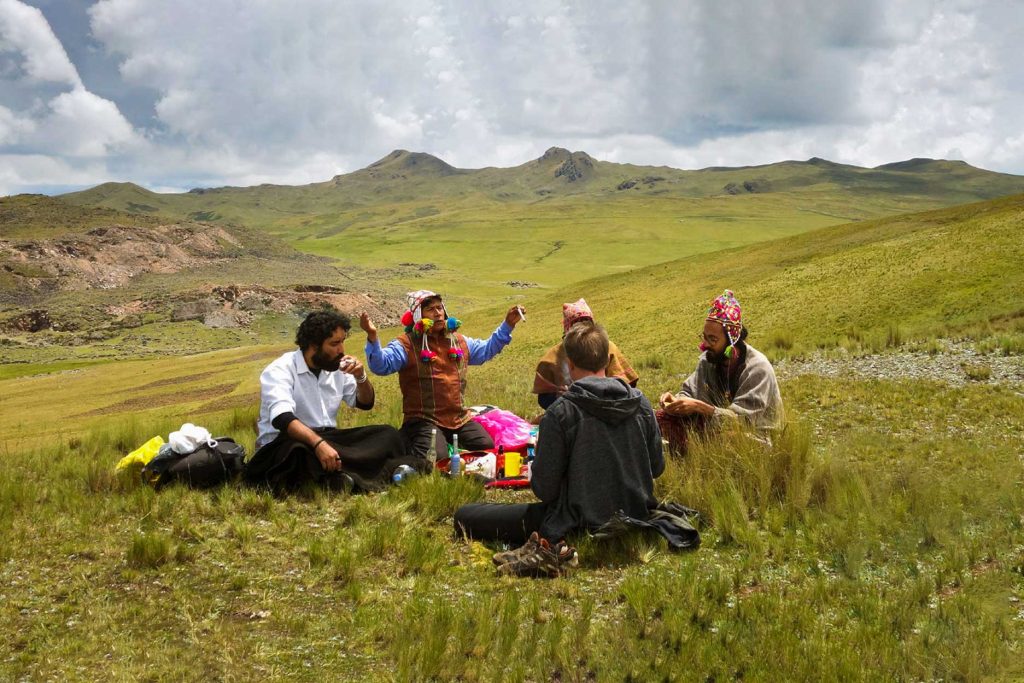
Mystical Destinations in Cusco
Cusco is one of those places that invites you to reconnect with yourself. Beyond its spectacular landscapes and incredible history, there is something in the air, in the cobbled streets, and the gaze of its people that envelops you with a unique energy. Here, traditions are not just part of the past; they are lived daily. The ancestral ceremonies, which many locals still practice, make you feel that connection with nature that has sadly been lost in other corners of the world.
This city, known as the heart of the Inca Empire, is surrounded by impressive structures that tell stories of a civilization that defied time. Walking through the Historic Center or visiting nearby ruins like Sacsayhuamán or Qenqo is not just a tourist walk; it’s an experience that leaves you with goosebumps. The enormous stones assembled with almost magical precision seem to whisper secrets from the past. Many visitors say they feel connected to something greater, a kind of spirituality that is hard to explain with words.
But Cusco is not just history. It is also resilience. Many traditions were banned during colonial times, but the Andean spirit survived. Today, that spirit is felt in every detail: in dances, festivals, and even in the way Catholicism blends with Andean symbolism. This syncretism gives the city a unique personality, as if every corner has a story.
Then there is the connection with nature. The mountains, the rivers, the corn, the coca leaf… Everything has profound meaning in the Andean worldview. Here, it’s not just about admiring the landscape; it’s about respecting it, honoring it. The ceremonies around these elements are so moving that you can feel that spiritual connection even if you don’t understand all the details. It’s an experience that nourishes the soul and attracts those looking for more than just a vacation.
If you’re looking for a place that will make you rethink many things and, in the process, fill you with awe, Cusco is for you. Here, you will not only explore a destination; you will explore a part of yourself. Let me introduce you to some options you can explore while visiting Cusco to experience mystical tourism.
The Magic of the Sacred Valley
Imagine a place where time seems to stop, the mountains whisper ancient stories, and every stone has a tale to tell. Welcome to the Sacred Valley of the Incas, a hidden gem in the heart of the Peruvian Andes. This destination is a visual paradise and a vibrant center of spirituality and connection with the sacred. Join us on a tour of the Sacred Valley, where history, culture, and nature intertwine in a unique mystical experience.
An archaeological site that stands majestically over the valley. The stunning agricultural terraces and stone temples are silent witnesses to Inca wisdom. Walking through these ancient paths, you can feel the energy emanating from the earth, connecting you with the history and spirituality of this sacred place. In addition, the Pisac market is a vibrant place where you can immerse yourself in the local culture by purchasing handicrafts and traditional products.
Heading towards Ollantaytambo, another archaeological site renowned for its impressive architecture and spiritual significance. This ancient city was an important religious and military center, and today, its massive stone blocks and temples transport you to the Inca era. Here, you can participate in local ceremonies honoring Pachamama and Inti, further deepening your connection with ancestral traditions.
Connection with the cosmos is fundamental in the Inca worldview. In the Sacred Valley, you can explore Andean astrology, learning how constellations and natural cycles influence daily life. Participating in ceremonies celebrating the lunar and solar cycles will help you understand your place in the universe and connect with the cosmic energy surrounding the region.
Your spiritual adventure awaits in the Sacred Valley. Discover the magic this place has to offer, and allow its transformative energy to guide you on your journey! Explore this experience with our experts at Salkantay Trekking.
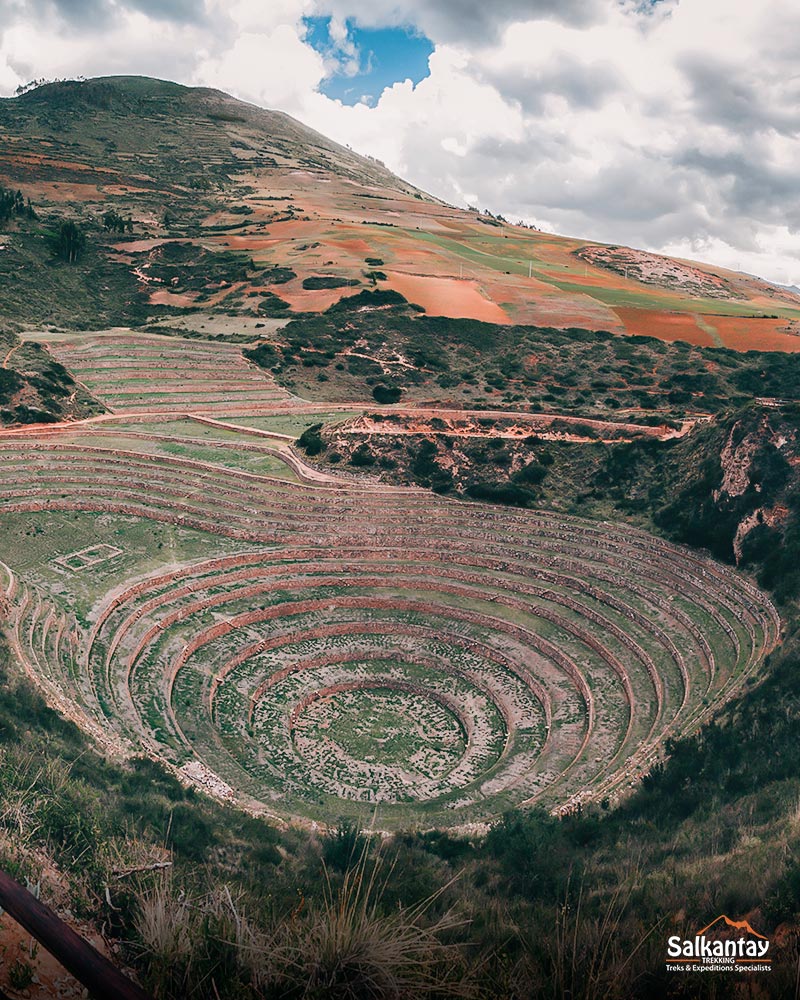
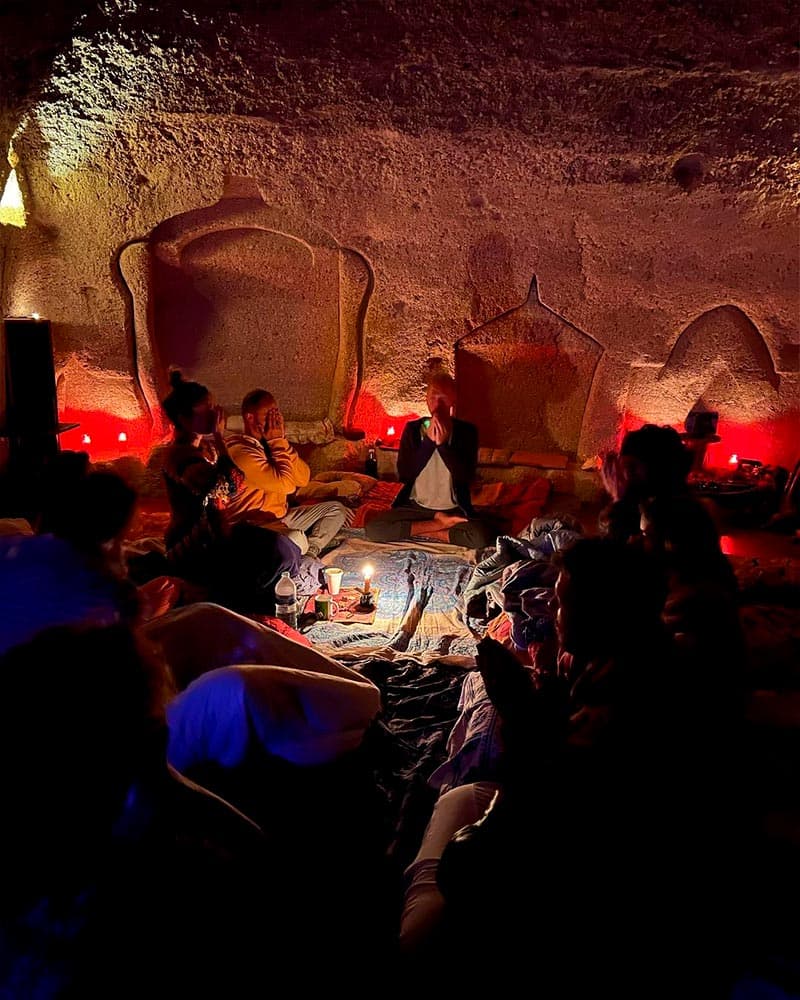
The Spiritual Heart of the Andes: Cusco
When you think of Cusco, imagine a place where stones tell stories of a glorious past, where every cobblestone street whispers secrets of a civilization that ruled the Andes. This is the spiritual heart of Cusco, a destination that invites you to immerse yourself in its rich Incan heritage, where spirituality and culture intertwine in an eternal dance.
Walking through the narrow streets of Cusco, it’s impossible not to feel the presence of the past. The city has been declared a UNESCO World Heritage site, and it is a mosaic of history. From the majestic Plaza de Armas to the imposing stone walls that once held sacred temples, every corner is a reminder of the grandeur of the Inca Empire. Here, time has stopped, allowing you to connect with a culture still alive in its people’s collective memory.
At the heart of Cusco lies Qorikancha, or the Temple of the Sun, a place that was the spiritual and religious center of the Inca Empire. Initially, this temple was covered in gold, reflecting the sunlight and creating a dazzling spectacle. Upon entering, you are enveloped by a sacred atmosphere; the stone walls and reverent silence invite you to reflect on Incan spirituality.
At Qorikancha, you can participate in ceremonies honoring Pachamama and Inti, the earth’s gods and the sun’s gods. These practices, which have withstood the test of time, allow you to connect with the ancestors’ wisdom and understand the Incas’ deep relationship with nature. Here, spirituality is not just a concept but a way of life that manifests in rituals and offerings.
Life in Cusco is marked by vibrant celebrations that reflect the fusion of Incan culture and colonial heritage. During the Inti Raymi, the Festival of the Sun, the city is filled with dances, music, and ceremonies honoring the sun’s deity. Participating in these festivities is a way to immerse yourself in the cultural essence of Cusco and experience firsthand the spirituality that still pulses in the daily life of its people.
Food is also an expression of Cusco’s spirituality. Traditional dishes, such as cuy chactado or pachamanca, are more than just food; they celebrate the earth and its fruits. Sharing a meal with the locals allows you to feel their connection with their environment and the importance of honoring what Pachamama provides.
Astrology and connection to the cosmos are also part of the spiritual experience in Cusco. Some spiritual guides offer astrological interpretation sessions, helping you understand how cosmic energies influence your life. This practice gives you a new perspective on your place in the universe and your connection with the divine.
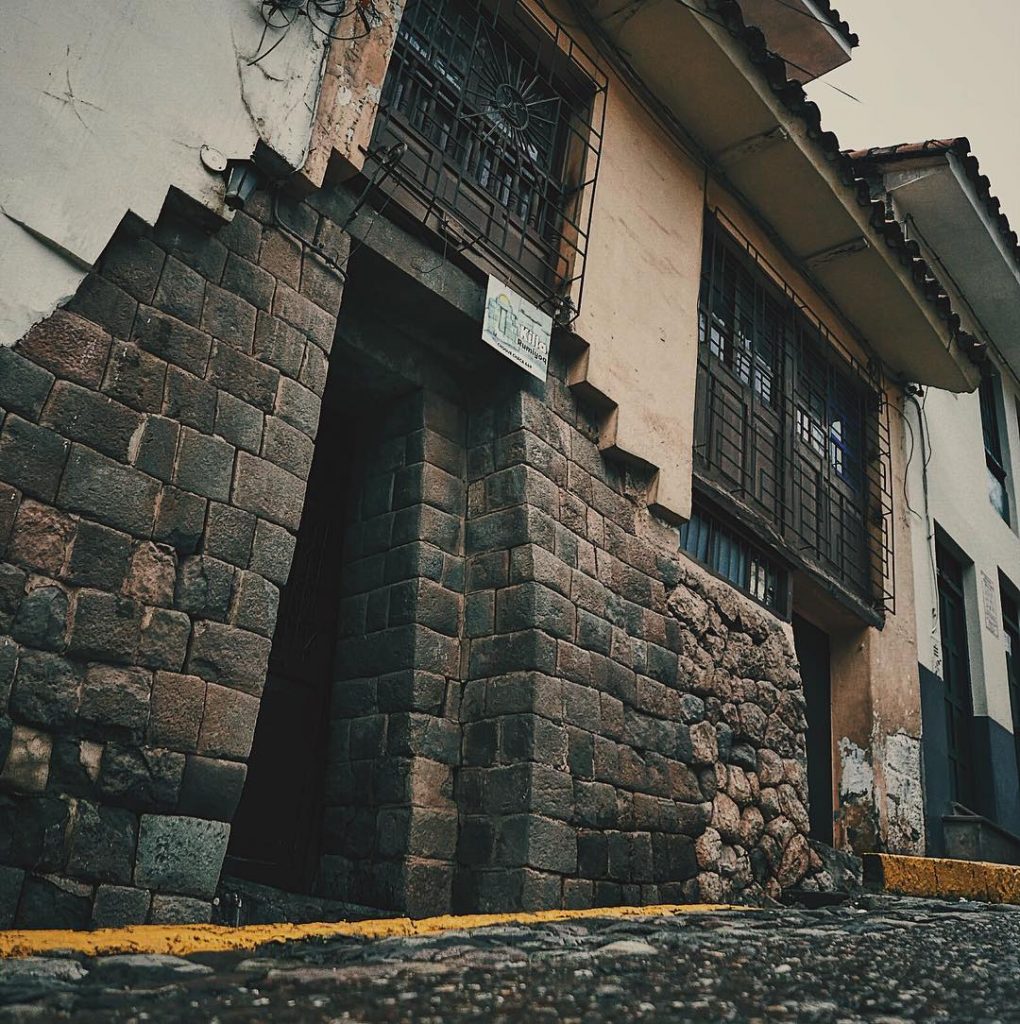
The Fortress of Sacsayhuamán
Sacsayhuamán stands as an imposing archaeological complex on the outskirts of Cusco, famous for its monumental architecture and connection to the Inti Raymi ceremony, the Festival of the Sun. This sacred place, built with huge stone blocks, is a testament to Incan skill and an energetic center where spirituality flourishes.
At Sacsayhuamán, visitors can participate in rebirth ceremonies honoring Pachamama. Here, the vibrant energy of the place is intensely felt, providing a space conducive to introspection and connection with Mother Earth. The ceremonies include offerings of flowers and coca leaves, symbolizing gratitude and respect for nature.
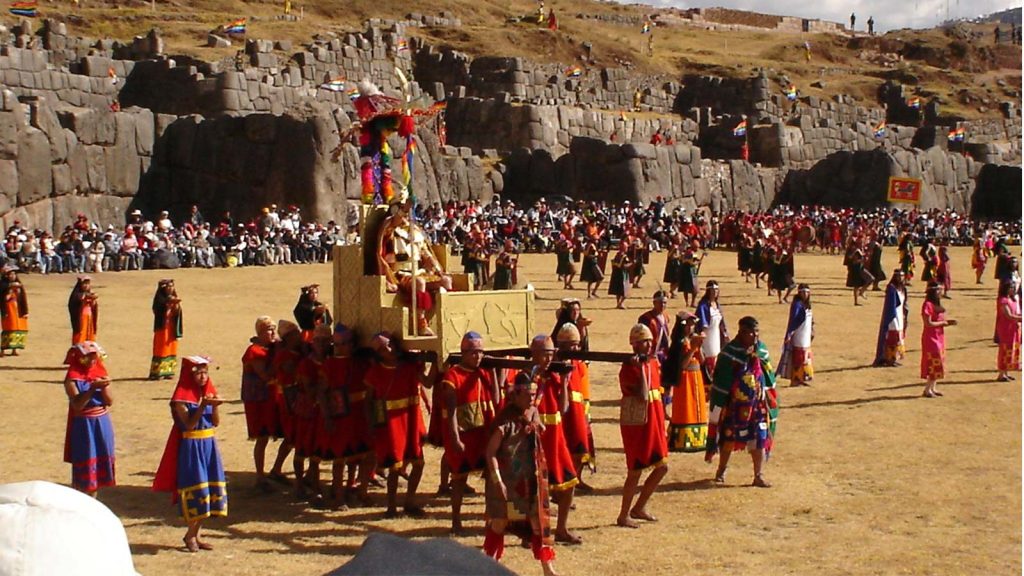
A Strategic Refuge: Puka Pukara
Puka Pukara, which means “red fortress,” is another important archaeological site offering a space to connect with Pachamama. This fortress on a hill offers panoramic views of the surrounding valley and is ideal for reflecting on Andean history and spirituality.
Visitors are invited to participate in ceremonies honoring Mother Earth. These activities may include purification and thanksgiving rituals, where participants sit in a circle, creating a connection between themselves and the natural surroundings. The energy of Puka Pukara resonates deeply, allowing attendees to feel the strength of the land around them.
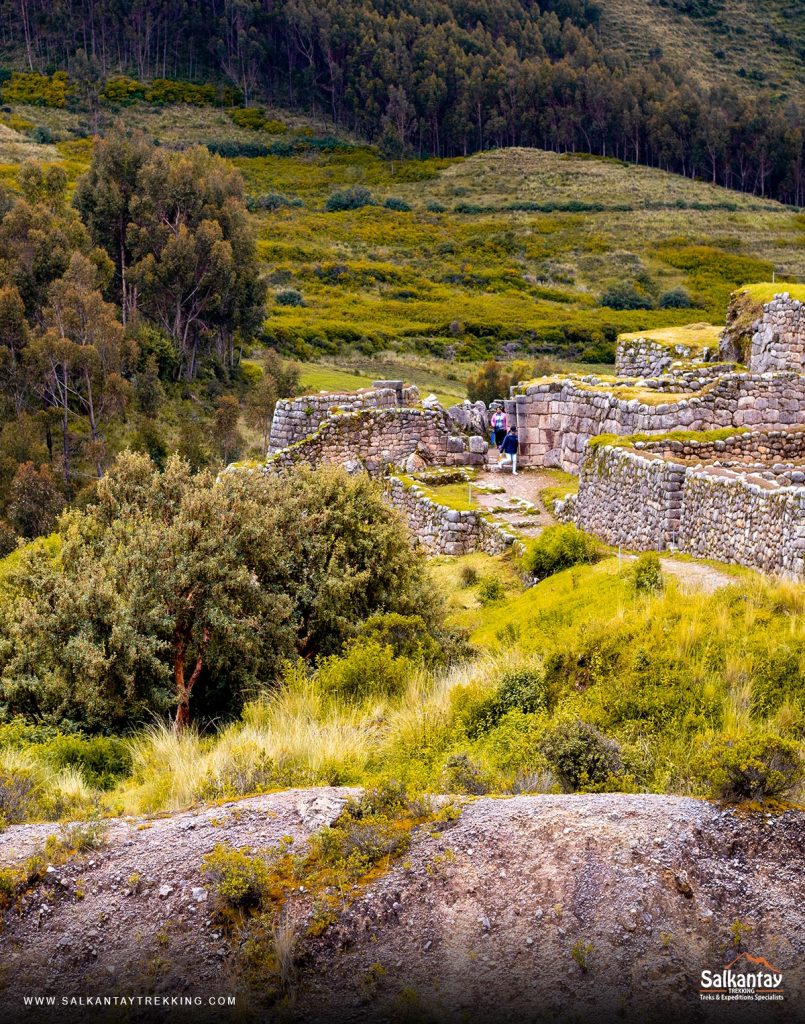
Machu Picchu: A Meeting with the Sacred
Machu Picchu, the jewel of the Inca Empire, is a place of awe and mystery. Although ceremonies or shamanic rituals are not allowed in the citadel, visitors can invoke the Apus, the gods of nature, asking for permission for a brief meditation.
At the summit of the mountains surrounding Machu Picchu, visitors can find a quiet space to meditate and reflect. This brief meditation allows participants to connect with the energy of the place and feel the presence of the ancestors who once inhabited this sacred land.
The archaeological sites of Cusco are more than just ruins; they are sacred spaces that invite connection with Pachamama and Incan history. From rebirth ceremonies at Sacsayhuamán to meditation at Machu Picchu, each experience is an opportunity for spiritual growth and self-discovery. If you are ready to embark on this transformative journey, Cusco awaits you with a legacy of wisdom and ancestral energy that will enrich your soul. Discover the magic of Cusco and its spiritual power!
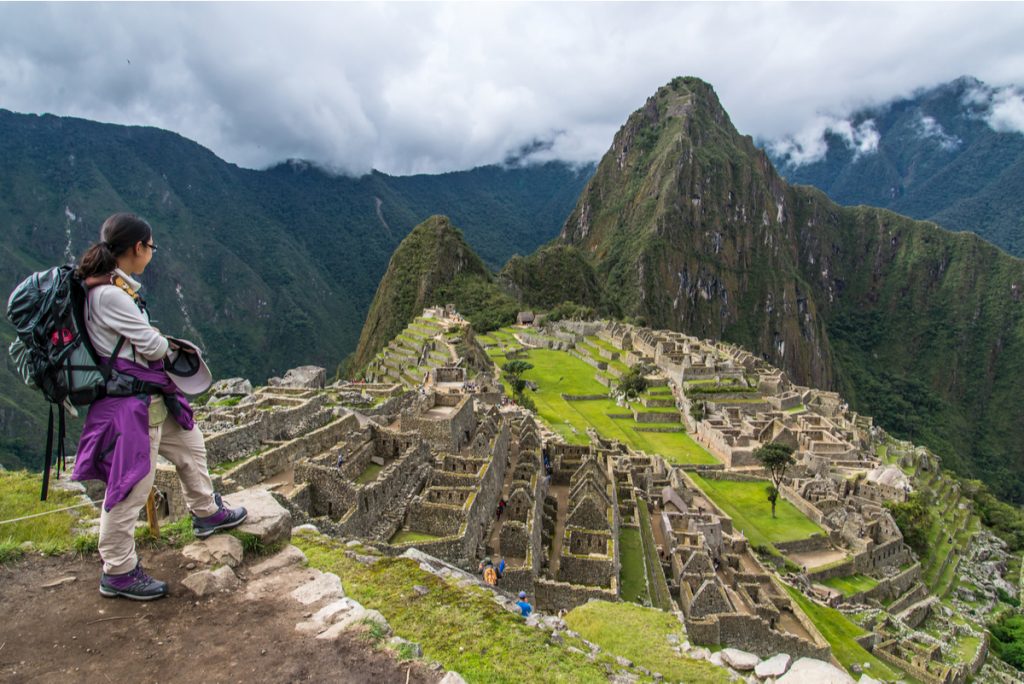
Humantay Lake: A Sanctuary of Spiritual Connection
Humatay Lake appears as a hidden treasure in the Andean region of Peru, where natural beauty meets spiritual energy, offering a unique experience for seekers of self-exploration. Located near the famous city of Cusco, this lagoon with turquoise waters and stunning mountainous landscapes dazzles with its appearance and invites meditation and connection with Pachamama.
The crystal-clear waters contrast wonderfully with the vibrant green of the surrounding mountains, creating a dreamlike landscape that invites reflection. This is a space where nature manifests in its purest form, allowing visitors to disconnect from the daily hustle and immerse themselves in calm.
Humantay Lake is a sacred place for many. Visitors can participate in ceremonies that honor Pachamama, where offerings of flowers and coca leaves are made, symbolizing gratitude and respect for the land. These practices foster a deeper connection with the environment and promote healing and spiritual renewal.
In this natural sanctuary, moments of meditation are an essential part of the experience. Sitting by the lagoon, you can contemplate the beauty around you and allow the tranquility of the place to envelop you. This meditation allows you to reconnect with yourself and your surroundings, nourishing the soul and spirit.
Like other sacred places, it reflects the rich Andean history and culture. The local community’s connection with this lagoon is a testament to the importance of nature in their daily lives. Visitors can learn about Andean traditions and how these practices have endured over time.
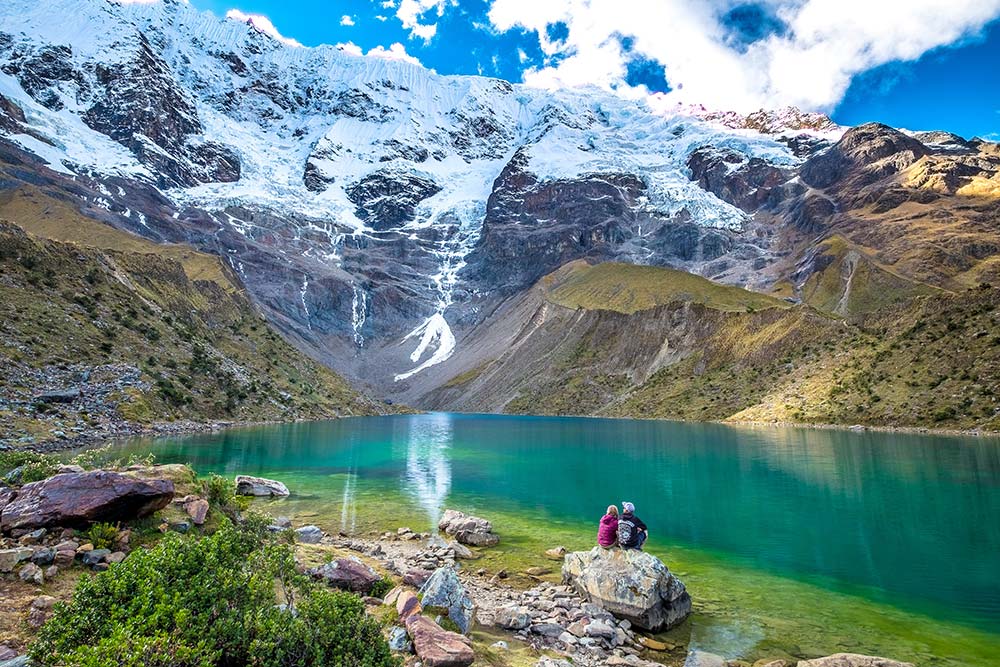
How to Plan Your Mystical Trip to Cusco?
Cusco, the ancient heart of the Inca Empire, is a destination that not only shines for its historical and cultural wealth but also serves as a hub of spirituality and mysticism. If you are ready to embark on a journey that transcends the ordinary and connects you with the sacred, here is a detailed guide on planning your mystical trip to this fascinating city.
Best Time to Visit
The best time to visit Cusco and experience its mysticism is during the dry season, from May to October. During these months, the weather is warmer, and rainfall is minimal, allowing you to explore archaeological sites and participate in outdoor ceremonies without issues. However, remember that June and July are peak tourist months due to school holidays, so planning your trip for May or September is advisable if you prefer to avoid crowds.
- Consider the Festivals
Andean festivals are key events that offer an immersive experience in local culture. Inti Raymi, the Sun Festival, is celebrated on June 24 and is one of the most iconic festivals, with ceremonies honoring the sun deity and celebrating the Incas’ relationship with Pachamama. Other festivals, like Qoyllur Rit’i in May, where pilgrims ascend to the Sinakara snow-capped mountain, offer rich cultural experiences. Participating in these festivals will allow you to connect deeply with Andean spirituality and live mysticism at its fullest expression.
Explore More on Our Blog: Cusco Weather: The Complete Guide to Year-Round Climate
What to bring?
Comfort is key when exploring Cusco and its surroundings. Bring lightweight and breathable clothing and extra layers for cooler nights. Comfortable pants and long-sleeve shirts are ideal for hiking and outdoor activities. Remember to pack a sweater or jacket, as temperatures fluctuate drastically throughout the day.
- Comfortable and Suitable Clothing
- Lightweight and breathable clothing: Cusco can be hot during the day, especially when exploring outdoors. Opt for light clothing that allows your skin to breathe. Also, consider that Cusco has variable weather, so pack extra clothes to stay warm in case of rain or a cold snap.
- Additional layers for the night: Nights in Cusco tend to be cold. Bring a jacket or sweater to keep warm when the sun sets.
- Comfortable pants: Comfortable pants are essential for long hikes and outdoor activities. It’s best to be durable and light so as not to cause discomfort.
- Long-sleeve shirts: An excellent option for sun protection while staying comfortable. Long sleeves can also shield your skin from UV rays.
- Comfortable shoes: Choose footwear suitable for walking, ideally with good support to avoid discomfort on cobblestone streets or uneven terrain.
- Sun and Insect Protection
- High-quality sunscreen: The altitude of Cusco increases sun exposure, so it’s crucial to bring sunscreen with a high SPF. Apply it generously before heading out and reapply throughout the day, especially if you’re walking or staying outdoors.
- Insect repellent: If you’re visiting more rural areas or participating in outdoor ceremonies, it’s advisable to bring insect repellent. Mosquitoes can be a nuisance, especially near rivers or mountains.
- Camera or Smartphone
- Camera: Take the opportunity to capture the stunning landscapes, ancient Inca ruins, and festivals around you. Bring a camera that allows you to take quality photos, is lightweight, and is easy to carry.
- Smartphone with a good camera: If you prefer traveling with less equipment, your smartphone can be an excellent option. In addition to taking photos, it will help you navigate the city and look up information about places to visit.
Don’t Forget:
- Sunglasses: The altitude and sun can be intense, so good sunglasses are essential.
- Reusable water bottles: Stay hydrated during your explorations. Bring a refillable water bottle to use throughout the day.
- Small bag or backpack: A light backpack to carry essentials during excursions, such as water, sunscreen, and snacks.
Where to Stay?
Cusco offers many accommodations, from luxurious hotels to more affordable and authentic options. Whether you’re seeking comfort, a local experience, or something more exclusive, here are some alternatives to suit your needs:
Luxury Hotels
If you’re looking for a high-end experience, luxury hotels in Cusco provide everything you need to relax and enjoy your stay. With services such as spas, gourmet restaurants, and stunning city views, these accommodations guarantee an unforgettable experience.
Traditional Hotels
Cusco has a wide range of hotels across various categories if you prefer a comfortable place without necessarily going for luxury. Many are located in the historic center, close to major tourist attractions.
Airbnb
For a more personalized experience or if you’d like to immerse yourself in local life, Airbnb is an excellent option. From entire apartments to houses in rural areas, Airbnb lets you uniquely enjoy Cusco.
- Advantages: You can rent apartments with kitchens, giving you the freedom to prepare your meals or even stay in a traditional Andean house for a more authentic experience.
- Tip: Always check reviews and verify the location to make sure you’re close to the tourist spots you want to visit.
Other Accommodation Options
- Hostels and Lodges: If you’re traveling on a budget or prefer a youthful, relaxed atmosphere, Cusco offers great hostels and lodges. Many of these are designed for backpackers and travelers who want to meet others while enjoying a comfortable, affordable stay.
Additional Tip: If you need more time or prefer somewhere more exclusive, hotels near Plaza de Armas or the Historic Center are the best options, allowing quick access to major tourist sites. Alternatively, if you want to disconnect from the hustle and bustle, consider staying in quiet neighborhoods like San Blas, which combines charm, culture, and proximity to the center.
Explore More Options in Our Blog: Where to Stay in Cusco?
How to Get to Cusco?
The most common way to reach Cusco is through Alejandro Velasco Astete International Airport, which receives domestic and international flights. You can take a taxi or private transport to the city center from the airport. If you’re traveling from Lima, you can take a bus, although the journey can take between 20 and 24 hours.
We provide all the information you need to get to the Imperial City in our blog: How to get to Cusco?
- Transport Options Within the City and Surroundings
Once in Cusco, there are several ways to get around. You can choose taxis, which are affordable and convenient, or use transportation services through apps like Uber. To explore the surroundings and archaeological sites, consider renting a vehicle or joining guided tours that will take you to places like Sacsayhuamán, Pisac, and Humantay Lake.
Prepare to be amazed by the magic of Cusco. From its stunning architecture to the hospitality of its people, every corner of this city is steeped in history and spirituality. Remember that connecting with Pachamama is essential to the experience, so keep an open mind and heart to the teachings this place offers.
Planning your mystical trip to Cusco is an exciting adventure that will allow you to immerse yourself in a rich and spiritual culture. By following these tips, you’ll be ready to explore the mysteries of this ancient city and connect with its sacred energy. Embark on this transformative journey and discover the true meaning of Andean spirituality in the heart of Cusco!
You May Also Like
- Complete Guide to the Markets of Cusco: A Unique Sensory Experience
- How to Spend a Weekend in Cusco, Peru
- The Best Things to Do in Cusco in 3 Days
- What to expect and how to prepare for the Rainy Season in Cusco, Peru?
- Cusco Tourist Ticket: What Is It and What’s It For?
- Where to eat in Cusco 2025, the best of Cusco

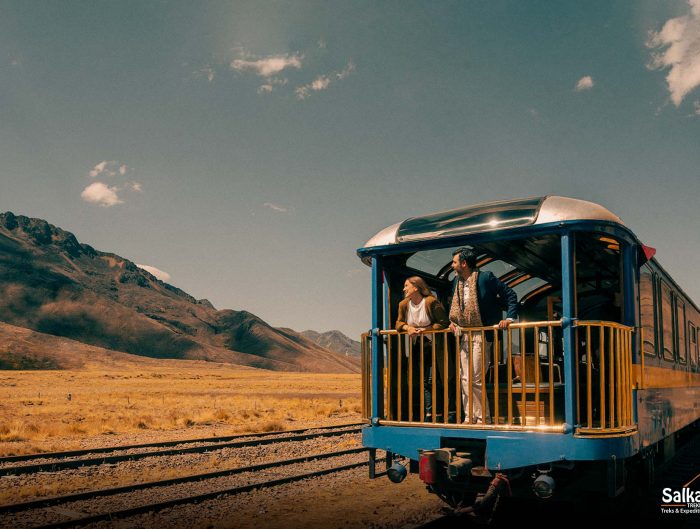
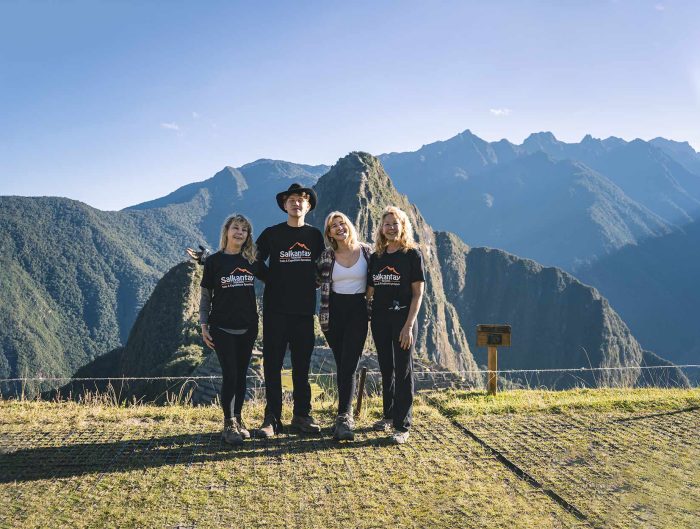
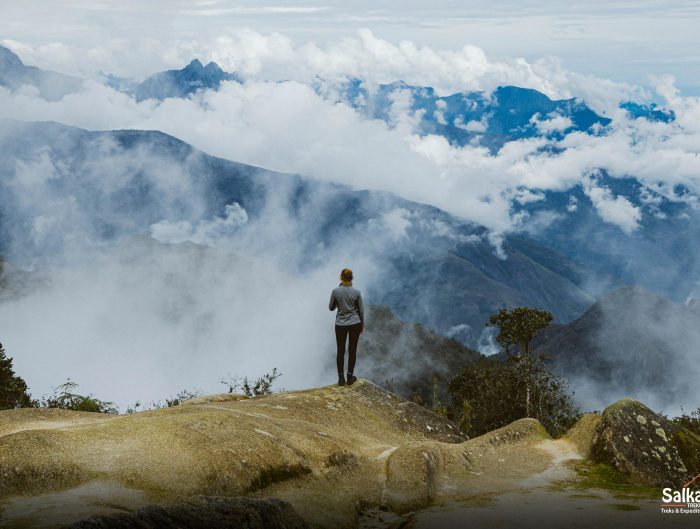
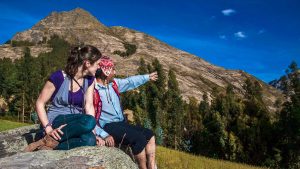
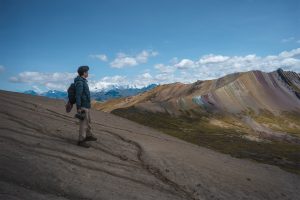
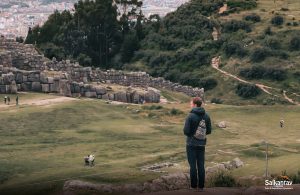
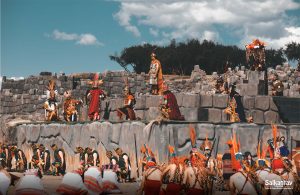


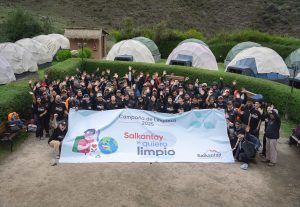

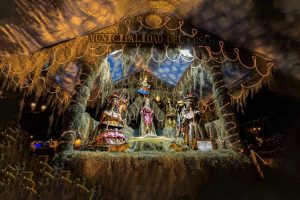
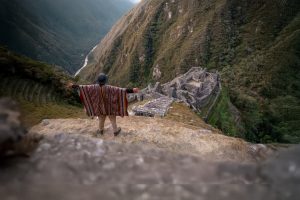
Leave A Reply